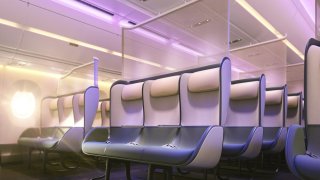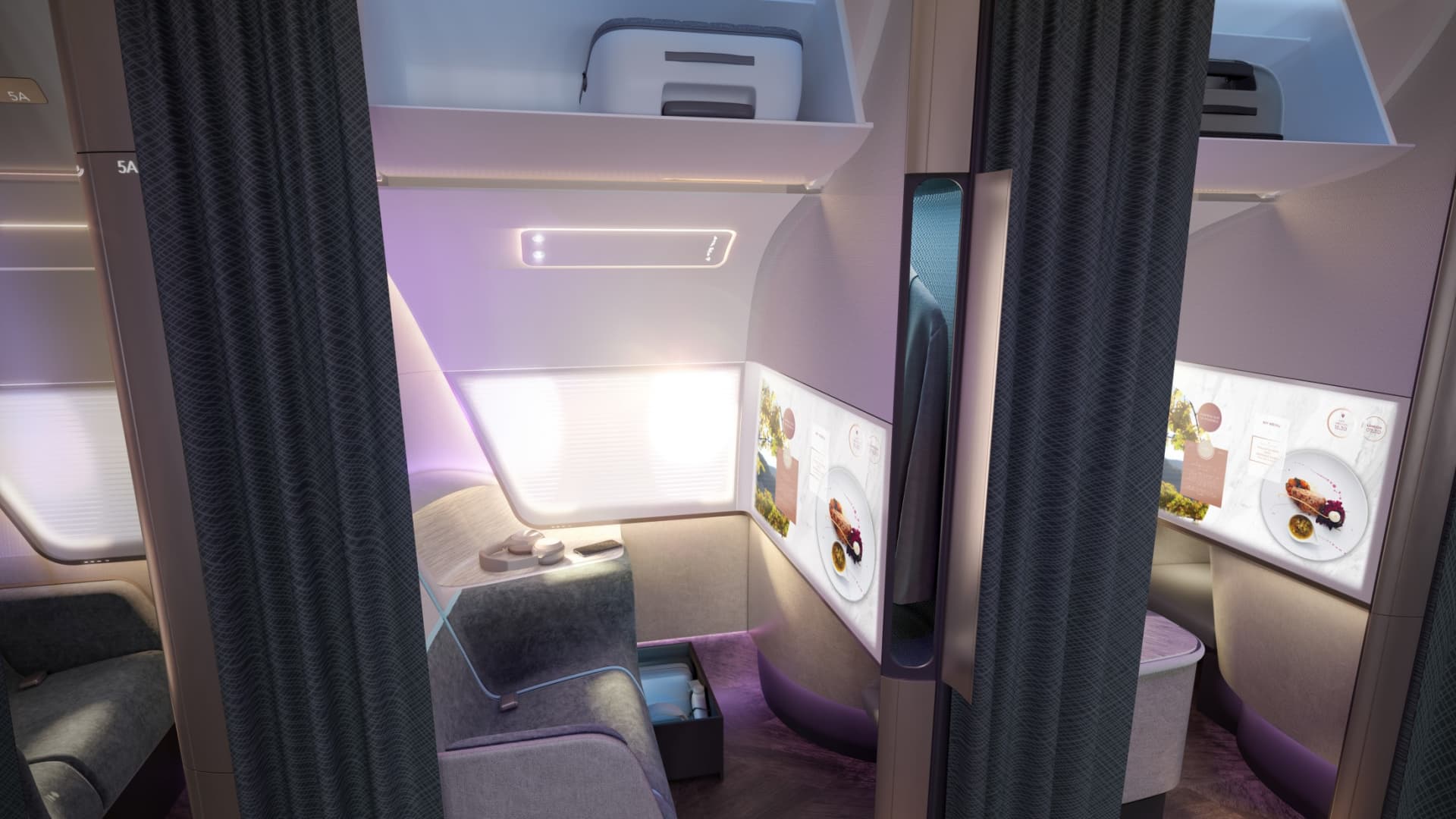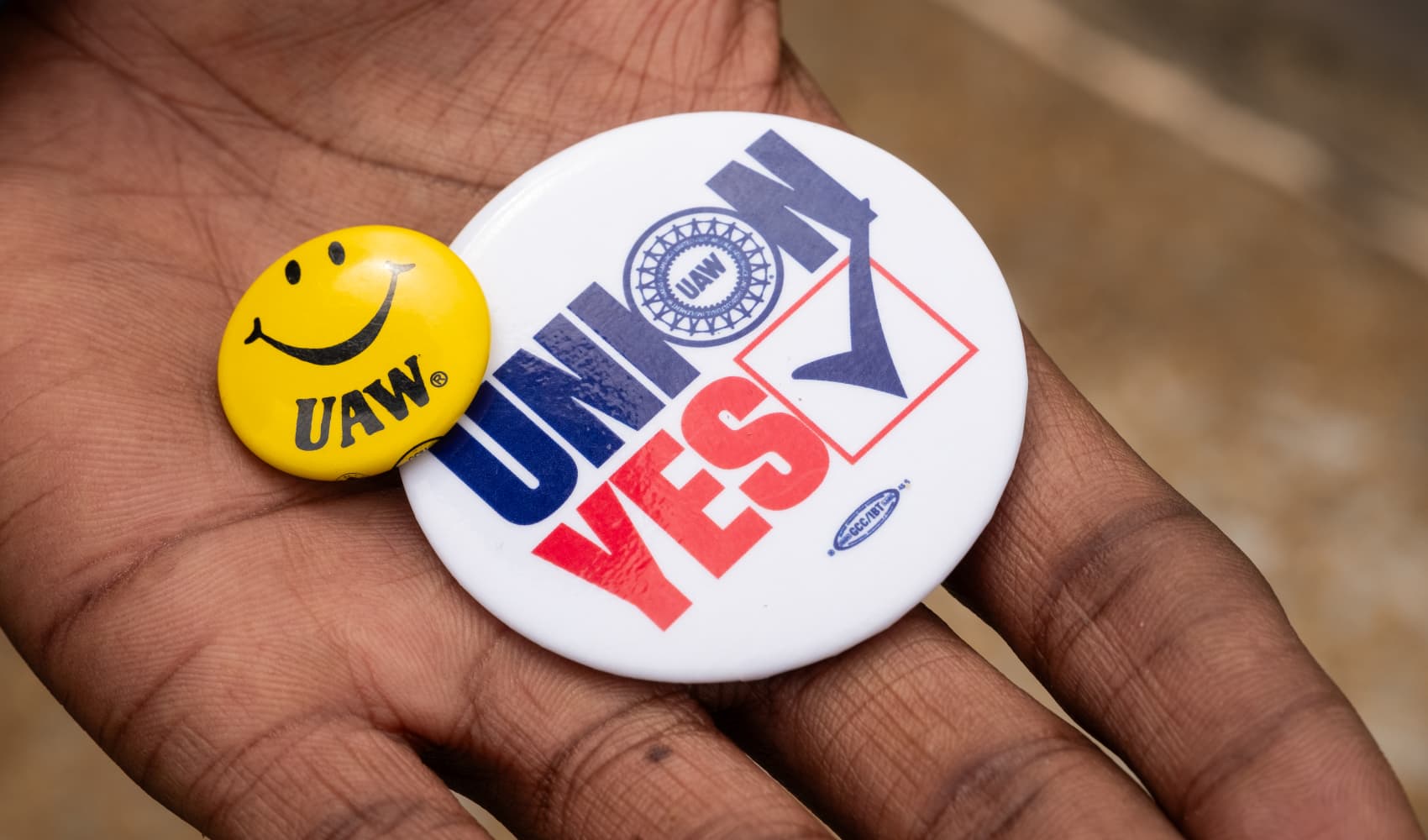
With mandatory masks and empty middle seats, air travel certainly looks different during the Covid-19 pandemic. But London-based transportation design firm PriestmanGoode has taken it a step further, and re-imagined how airplane cabins could be outfitted to make the environment safer for passengers and crew.
While it's unclear when or if these designs could be brought to life, here are models depicting PriestmanGoode's proposed changes to economy cabins:
Maintaining six feet of distance from other people on an airplane is currently very challenging. Airlines such as Delta, JetBlue and Southwest have taken to temporarily blocking middle seats to allow for more space between passengers.
PriestmanGoode proposes staggering the rows of seats, so that people have more private space. This also allows people to sit with a group of two or three friends or family members, while steering clear of other parties on board. Between each row of seats, a screen divider would extend from the ceiling to the top of the seat for additional protection. Even the seats are constructed with no seams or cracks so they're easier to clean.

Seat backs and tray tables have been completely overhauled by PriestmanGoode. Instead of built-in touchscreens for movies and in-flight announcements, this design includes attachments for passengers to prop up their own tablets and smartphones on the seat backs.
And instead of the usual pocket with magazines and brochures, the firm has opted to print safety information and in-flight announcements on the seat so there's less material to touch and handle. Similar to the media display, passengers could use bungee cords to fasten their own bag, water bottle or personal items to the back of the seat.

Many airlines have removed or altered the snack and dining options during the pandemic.
PriestmanGoode has a different solution to safely serve food: removable tray tables that go straight from the service trolley, to the passenger, then back to the flight attendants to be cleaned. Rather than wiping down the tray table before eating, this would allow passengers to have a freshly disinfected dining surface each time they're served.

One innovation that PriestmanGoode is touting is fabric that changes color after it's been cleaned. According to a press release, the seat fabric is treated with "photochromic and thermochromic ink" that reacts to cleaning supplies to indicate that it's been disinfected with heat and light. (Textiles can be treated with dyes that change color when they're exposed to UV light or heat, although this specific application is new.) Once someone sits in the seat, the fabric changes color.
Money Report
The design firm also proposes using far-UVC light to kill airborne germs and virus particles in the cabin. The lights would be blue during the UVC light cleaning process, then shift to warm yellow when complete.
(New research suggests that far-UVC light can kill small particles of viruses and bacteria on surfaces and in the air. A study out of Columbia University found that far-UVC light killed 99.99% of coronaviruses in air droplets. Experts say these lights could be useful in healthcare settings, but more studies need to be done on the long-term effects of far-UVC light exposure to make sure it's safe.)

Business class could provide even more of an upgrade.
PriestmanGoode suggests that business class travelers have their own pod, complete with a personal overhead compartment and wardrobe for storing items. A curtain would serve as a partition between the flyer and the rest of the aircraft for more protection.

Covid-19 is mainly spread through respiratory droplets when an infected person breathes, talks, coughs or sneezes. Air travel increases your risk of contracting Covid-19 because you spend extended periods of time in close proximity with other people, and come in contact with high-touch surfaces, according to the Centers for Disease Control.
Check out: The best credit cards of 2021 could earn you over $1,000 in 5 years
Don't miss:






